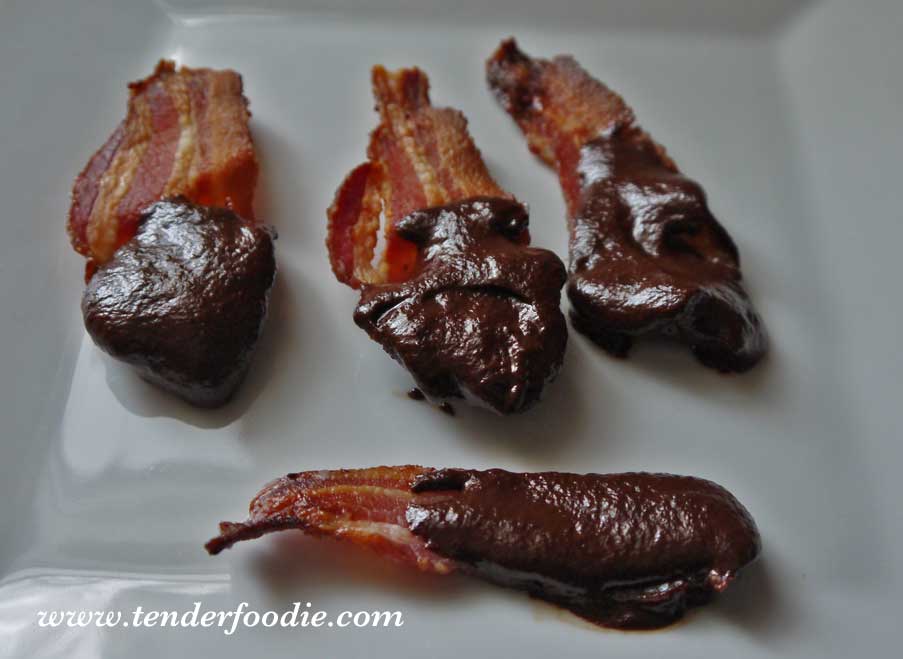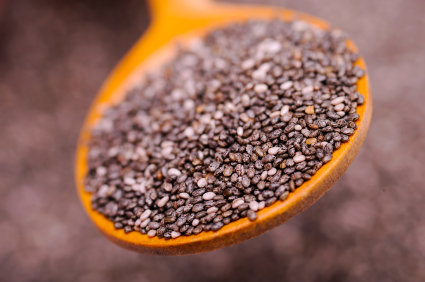Honey-Infused Chocolate Covered Bacon (using raw cacao)
 Tuesday, February 4, 2014 at 7:26PM
Tuesday, February 4, 2014 at 7:26PM  Elisabeth Veltman, The Tender Foodie tagged
Elisabeth Veltman, The Tender Foodie tagged  bacon candy,
bacon candy,  chocolate covered bacon without cane sugar,
chocolate covered bacon without cane sugar,  dairy-free,
dairy-free,  egg-free,
egg-free,  gluten-free,
gluten-free,  raw cacao covered bacon,
raw cacao covered bacon,  soy-free,
soy-free,  soy-free desserts
soy-free desserts  Email Article
Email Article  Print Article in
Print Article in  Recipe
Recipe 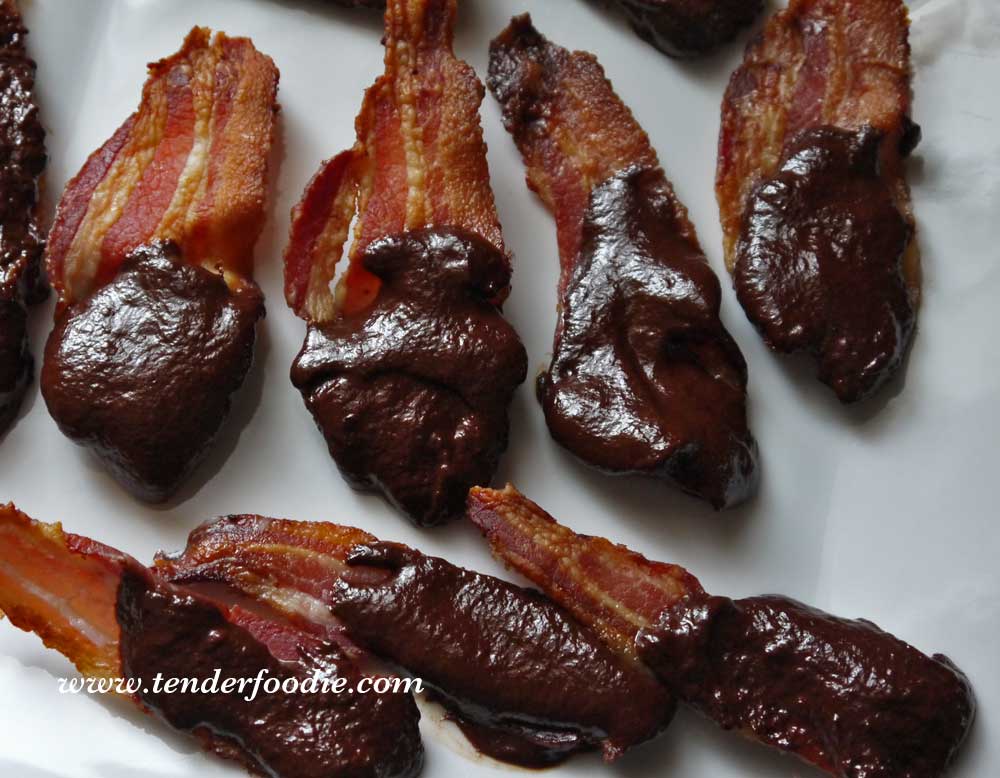
In the last post, we learned that yes, you can cook bacon naked, and without peril to your naughty bits, if you simply cook it in the oven. It's easy, saves time, does not splatter, and this method helps you save or toss the grease without mess. For this chocolate-covered bacon recipe, you need evenly cooked bacon that stands at attention, so using the oven is the best way to acheive this.
We've also learned that bacon can stop an argument on a dime, just by its mere mention. If this legend is indeed true, then chocolate covered bacon will one day bring about world peace.
For those of you who have removed cane or beet sugar from your diet, the ganache for this recipe is made from honey, and you will love it.
Ingredients
Here is what you will need:
- 1/2 lb cooked gluten-free, thick cut bacon (see this recipe for the perfect bacon)
- 1/4 cup of GF, DF raw cacao powder (here's my favorite)
- 1 TBS organic coconut oil (I love Carrington Farms)
- 2 TBS of local honey
- a small saucepan, or stovetop-safe ceramic dish
(Double this recipe for 1 lb of bacon. If using more than one pound, make the ganache in batches for 1 lb of bacon at a time)
Recipe
In your small saucepan or stove-safe ceramic dish, bring the coconut oil and honey to a boil by placing the burner on high. It will start to bubble like this:
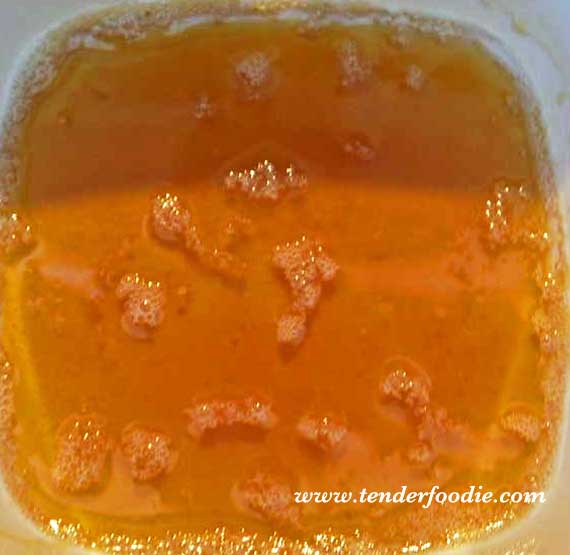
Keep the pan on the stove until the honey and oil come to a full boil like the picture below. Let it boil for 30 to 45 seconds. No more than 60 seconds as you do not want this to burn. When cold, the ingredients will be separated, but after boiling they will come together and make a sort of caramel.
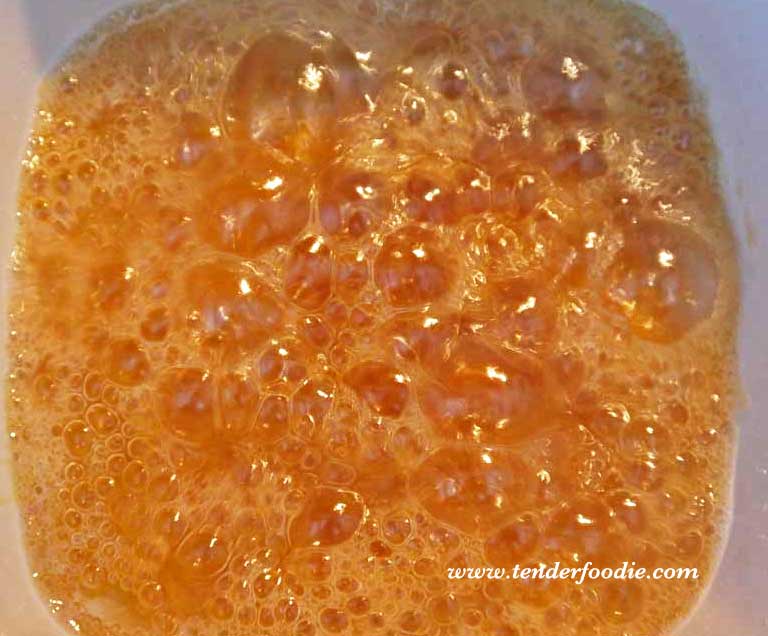
Let the honey and oil mixture cool for 5 minutes. If you place the raw cacoa powder in too early, you may burn it. The mixture should be warm but not hot. When at the right temperature, slowly add in the raw cacao powder a little at a time, stirring to completely incorporporate the chocolate/cacao into the mixture. Keep adding until you get the proper spreading consitency. You will get the right consistency somewhere between 1/8 and 1/4 cup of cacao. I like it a little thicker (so I use almost the entire 1/4 cup), you may like it a little thinner. If you don't use it all, return the extra to the package to use later!
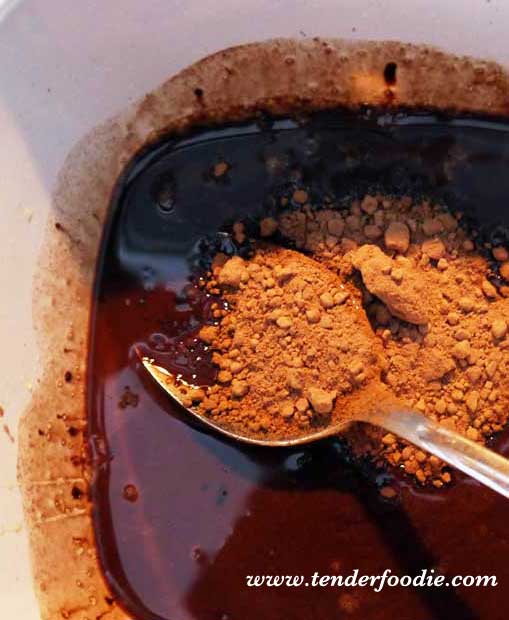
The consitency of the chocolate mixture will look something like this. It will slowly drip off of the spoon, and will be easy to spread.

Lastly, break the cooked bacon strips in half and using a spoon, spread the chocolate onto one side of the bacon, half way up the strip. Make it a nice thick coat, using the bacon like a spoon. Chocolate lovers can put the chocolate side down on their toungue, while bacon lovers may put the bacon side on their toungue. Each will give you a slightly different experience. Covering one side also helps make the bacon look good on the plate right away. You don't have to use a separate plate to wait for the chocolate to harden and then waste a bunch of chocolate on the plate.
After it hardens a bit, place in the refrigerator, covered, for an hour or overnight. Served best chilled.
Enjoy! (and have the leftovers for breakfast, seriously).
